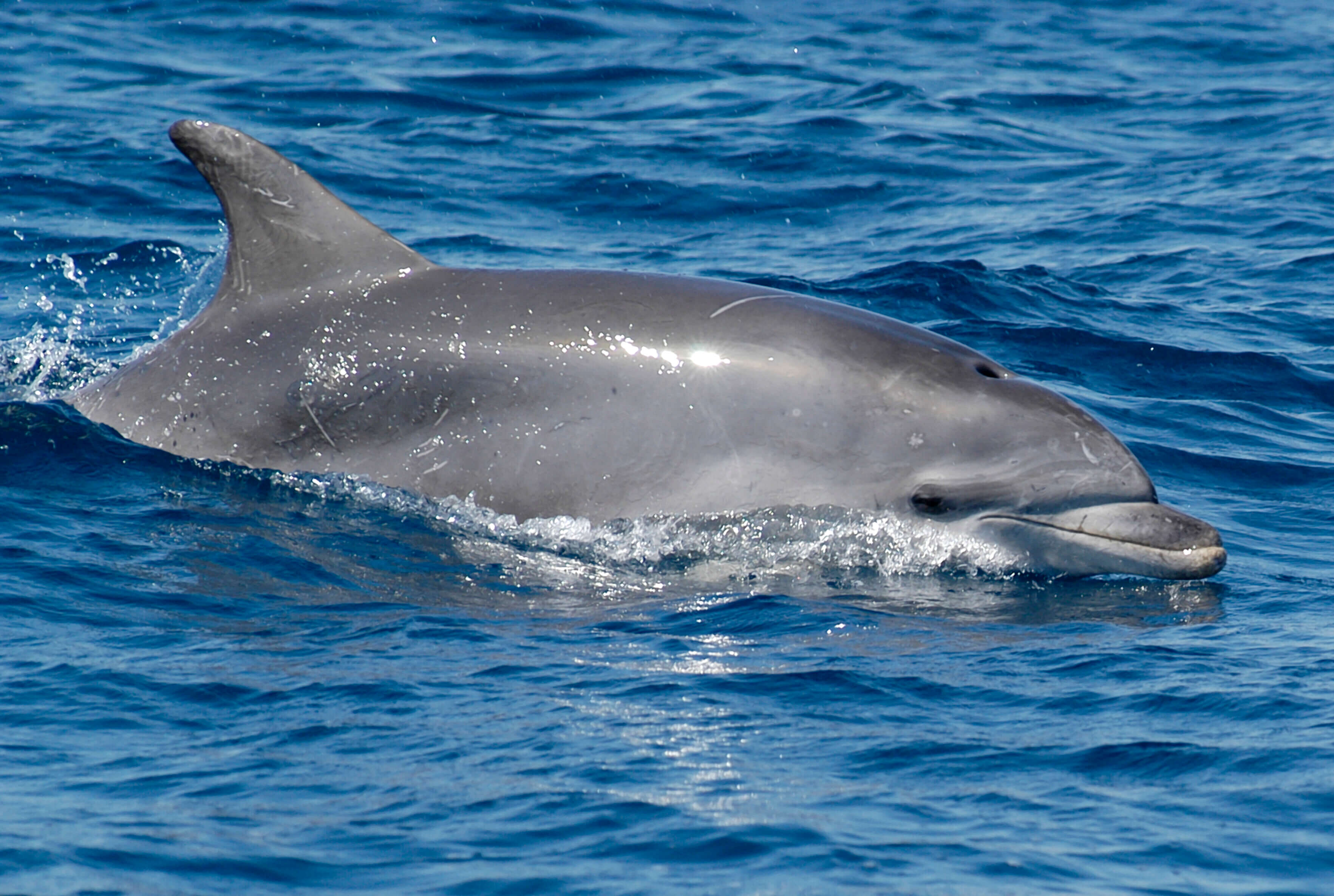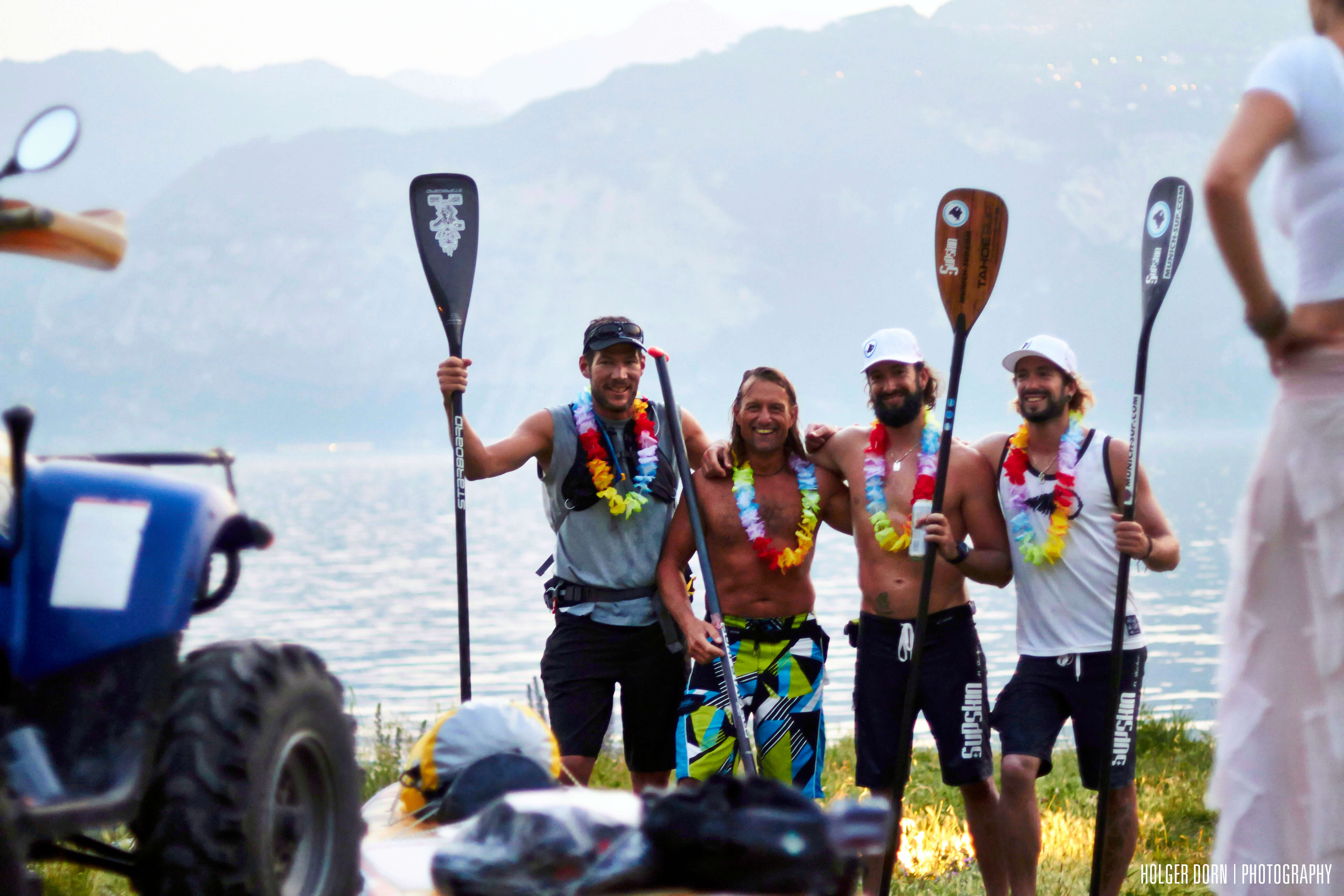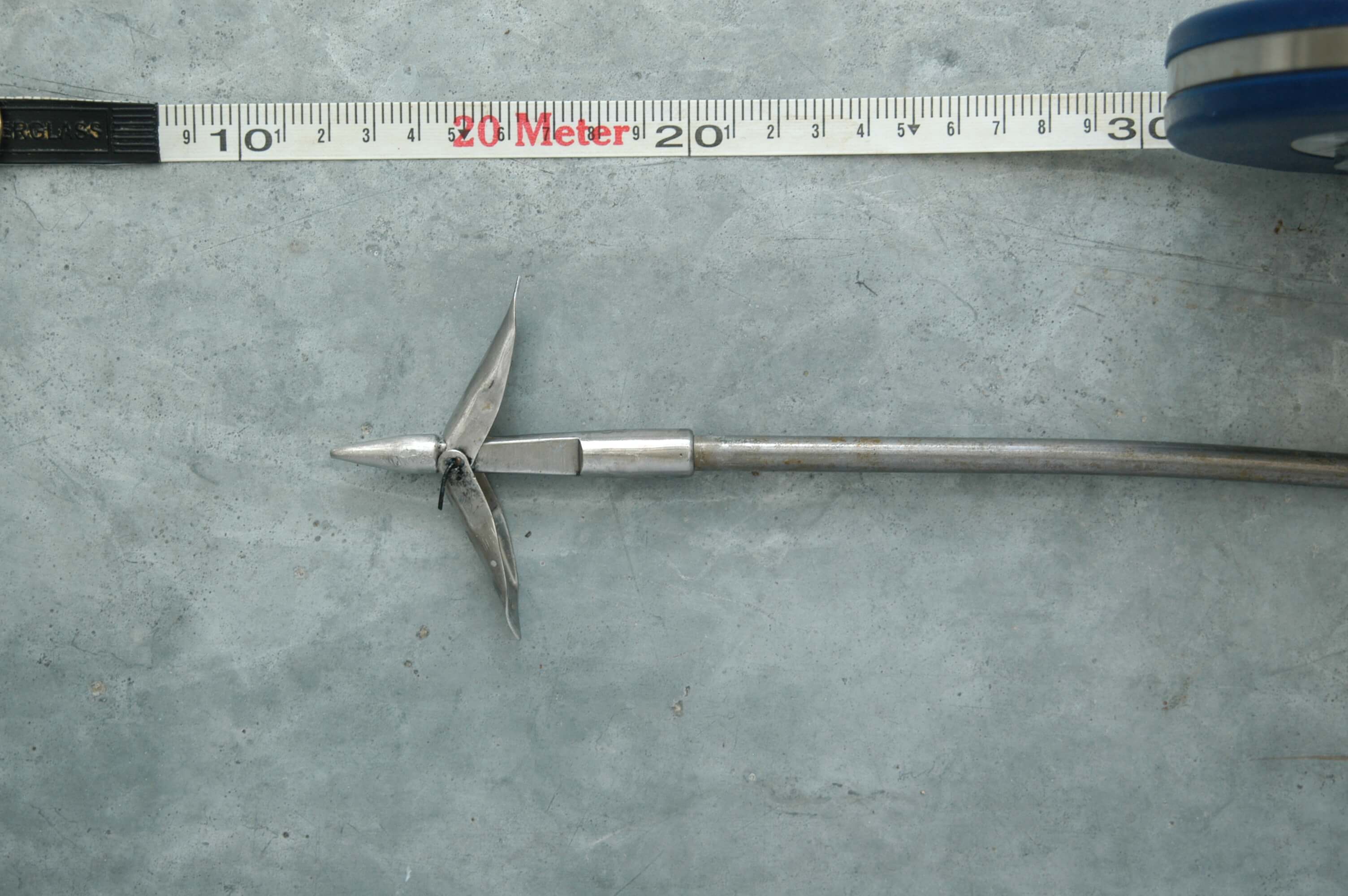VIDEO: Watch as Carefree Dolphins Play Near Bol on Brač
Coming across dolphins is always a truly magical experience, despite the fact that a chance meeting with these beautiful creatures is not at all uncommon in the Croatian Adriatic. Even though dolphins can be seen somewhat regularly, when you get to experience them playing and enjoying themselves like this, you cannot help but feel very privileged.
As Morski writes on the 30th of July, 2019, one such video of dolphins captured as they playfully enjoyed themselves comes from the bay of Zli Dol near Bol on the island of Brač, the third largest Croatian island, and the largest one in Dalmatia, just across from Split.
There are only two species of dolphin currently known to be present in the Adriatic sea - the common bottlenose dolphin (Tursiops truncatus) and the short-beaked common dolphin (Delphinus delphis).
The short-beaked common dolphin used to live in and be spread across the entire Adriatic, but today we rarely see them in the southern Adriatic. There are almost none of them in the northern area, so the news quickly spread when, back in July 2018, researchers discovered a group of over fifty short-beaked common dolphins, an otherwise regionally extinct species, during a visit to the beautiful Telašćica Nature Park on Dugi Otok.
Bottlenose dolphins can still be found throughout the Adriatic, and this is the species to which all the most famous dolphins belong; those seen on television, sich as Flipper, Fa and Bee from the movie, and most of those performing various tricks and interacting positively with humans are bottlenose dolphins.
These are the famous intelligent and very sociable dolphins (with a few exceptions of other species), written about long ago by the ancient Greeks, and even today, these apparently fearless and very friendly creatures tend to approach people without any issues and often enter into harbours and swimming areas. While there is likely another reason to this behaviour, as dolphins are known to terrorise schools of fish in order to confuse them and make them more easy pickings, it is precisely these dolphins that some believe ''help'' fishermen catch their fish, by forcing fish into their nets. It's really no wonder that their Croatian name is the ''good dolphin'' (dobri dupin)!
In addition to these two popular inhabitants of the Adriatic, we can sometimes witness some species of porpoises and whales that have for some reason strayed from the Mediterranean sea into Croatian waters.
Watch this beautiful and uplifting video of some dolphins having fun near Bol, and make sure to keep your eyes peeled this summer on the Croatian coast - you might just see some!
Make sure to follow our dedicated lifestyle page for much more.
Standing Up For Croatian Dolphins
Croatian dolphins rarely excited a young Mario Stecher.
He encountered the aquatic mammal every summer during a decade-long stint as a skipper for his father’s Istria-based charter boat company.
“We saw the dolphins many, many times,” Stecher said, now 36 years old. “So often that in the end it gets boring.”
The tourists? Oh, they used to ogle and coo as the sea-faring mammals skipped ahead of the sailboat’s bow.
With the benefit of time and a brief health scare, Stecher’s casual apathy towards Croatian dolphins transformed into an affinity so strong, he wants to help them.
Together with his twin brother Manuel, Stecher is organizing the “Istrian SUP Challenge,” an exhausting five-day paddle boarding excursion around the Istrian peninsula designed to raise funds for the “Rescue of the last Adriatic dolphins” project of the German non-profit Society for the Salvation of the Dolphin.
Stand up paddle boarders from around the world will make the trip around the Istrian peninsula this May with to raise awareness — and funds — for the dolphins.

The Adriatic Sea’s last mammal needs the help.
Nearly Eradicated, Still Hunted
Croatia’s chunk of the Adriatic has about 220 bottlenose Croatian dolphins left in its stock, according to Dr. Martina Duras, of the University of Zagreb’s Faculty of Veterinary Medicine. It’s a drastic drop from the not too long ago, when three aquatic predatory mammals roamed Croatia’s shores.
The bottlenose dolphin was, in fact, one of the least prevalent. It shared territory with the Mediterranean monk seal and the short-beaked common dolphin, which came into contact with humans much more often. It led to their demise.
The monk seal and common dolphin were effectively erased from the Adriatic through concerted, often state-sanctioned killing sprees conducted by local fishermen, who saw the creatures as competitors for their catch. The misconception, unfortunately remains.
To this day, dolphins in Croatia’s Adriatic are being harpooned, shot or stabbed, according to Duras, whose “Rescue of the Last Adriatic Dolphins” project is the main beneficiary of the Istrian SUP Challenge.
All dead dolphins which wash ashore in Croatia are sent to Duras for autopsies. Over the last 20 years, 11 have been killed by humans.
“Every time it happens, we’re shocked. We ask ourselves ‘Is this really still going on?’” Duras said. “We can’t say who’s doing it, unfortunately; if it’s fishermen or someone else.”
The bottlenose dolphin now faces a newer, more banal-seeming threat, according to Duras: a boom in “dolphin watching” tourism. She recalls a recent trip to the shore where she saw four to five boats filled with ogling tourists follow a pod of dolphins.
“It’s not as harmless as people think,” Duras said.
The mammals started showing classic signs of distress: deeper dives, longer dives punctuated by brief gasps for air and generally trying to avoid the flotilla of selfie-snapping tourists following them around.
It’s a far cry from Mario Stecher’s days of summer boredom, more than 15 years ago.
From Kites To Boards
Stecher began a decade-long stint as a skipper with is father’s charter company in Istria. Mostly on a whim.
Or, as he put it: “Every 18 year old guy will say, ‘Yeah, let’s go down to the southern European coast and wear board shorts and get a tan instead of staying in cold Germany.”
An avid kite-surfer at the time, Stecher would exploit windy days to head out on the water, then set up spotlights at night to work on or repair the boat.
In his late 20s, a succession of illnesses caught up with Stecher and curtailed his active lifestyle.
First came a cancer scare, which ended up benign but left him with a lasting bone deficiency in his leg. That was then exacerbated by a broken leg in Cape Verde and a mishap which almost led to an amputation, then long odds of ever walking under his own power.
“I was not 70. I was pretty shocked,” he said. “This isn’t something you’re thinking about when you’re 28 years old.” He needed to learn how to walk again, a process that took over a year.
Kite surfing was no longer an option.
He discovered Stand-up Paddling (SUP) instead, a low-impact exercise which resembles a marriage of canoeing and surfing. (SUPs have become a common site in Croatia every summer.)
His skippering days behind him, he began taking up SUP challenges for charities and fun, along with his twin brother Manuel.
First came a 2013 circumnavigation of Germany’s Lake Constance. Then, a ring around Italy’s Lake Garda, which was their first charitable SUP challenge.
“At that time, we were absolute nobodies,” Stecher said. “Just some guys on boards nobody heard of. But we still collected money for the dolphins.” About EUR 3,000, to be exact.
Then last year, Stecher’s father announced he’d finally call it quits on his summer charter boat business in Croatia. Mario saw an opportunity to say goodbye to his youthful summers while using his passion for a good cause.
Hitting ‘Walls’ On The Water
The Istrian SUP Challenge will be held this May, starting in Barcola, just north of Trieste in Italy, and ending in Opatija, Istria.
Stecher and his brother Manuel will be joined by three other stand-up paddle boarders from around the world — another German, a Slovenian and a Canadian.

The team plans on paddling 8-12 hours a day over the span of five days — as weather allows. They’ll pause every hour to eat a cereal bar then gulp down isotonic drinks to keep the hydrated.
Experience suggests it won’t be fun.
“There are moments where you can’t say which muscle hurts most because stand up paddling is a full body workout,” Stecher said. “From hour to hour the pain is changing. From muscle to muscle. Sometimes you feel it in the neck, then you feel it in the shoulders.”
They’ll have camping gear and provisions in tow to spend their nights ashore in tents. Stecher holds out hope for a “shuttle boat,” which will provide a floating storage locker and hotel, though nothing has been settled concretely.
Their days will start early, a tactic Stecher devised remembering his days as a skipper, when the northerly maestral winds would kick up during summer afternoons.
“We have the best chances to go without wind if we start before sunlight,” he said. The sooner they start, the sooner the pain will arrive.
Stecher likened it to the mythical “wall” often discussed by marathon runners — an invisible barrier in which both mind and body demand you quit.
“The pain gets bad enough you say, ‘C’mon guys, this was a f------g stupid idea. Let’s get on the coast and have a beer. This was a good workout and now let’s go home,’” Stecher said.
Helping The Clever, And Lucky, Bottlenose
Stecher hopes to raise EUR 5,000… preferably more.
The paddlers themselves will shell out about EUR 2,500 themselves for the trip, but wouldn’t mind donations or sponsorships to cover some of the costs (donors looking to sponsor the team can email Stecher directly or contact them via their Facebook page).
The focus, he added, should be on the dolphins and their environment — not his travails or the ensuing body aches. To help a creature that, by most accounts, could have died out alongside the common dolphin and monk seal.
The bottlenose dolphin remain in Croatia thanks to a common misconception — a bit of subterfuge leading to a foolish tale repeated by locals.
Bottlenose dolphins were often seen circling a school of fish, then driving them into fishermen’s nets. It may have saved them.
Locals dubbed them “dobri dupini”, or “good dolphins”, under the misguided notion dolphins were helping humans catch more fish.
Duras of the University of Zagreb said the dolphins had zero interest in helping the fishermen. The clever creatures used the nets as a trap, chasing the school of fish into a corner before picking them off.
The bottlenose dolphin’s demise would spell trouble for the Adriatic, Duras added, as it’s a key apex predator.
“You have to have that top creature in the system,” she said. “You can’t have a lot of fish without a predator to create balance in the system.”
Stecher, again fed by time and perspective, doesn’t find dolphins boring anymore.
“You feel that these animals are so clever and so important for us to have in this environment,” he said, recalling watching them skip ahead of a sailboats’ bow. “It’s an amazing animal that’s not just swimming in front of you, but swimming in front of you and watching.”
To donate to the Istrian SUP Challenge, click here.
To help out the team, contact Stecher at This email address is being protected from spambots. You need JavaScript enabled to view it. or the twins’ Facebook page.
You can read more about dolphins in Croatia here.
Common Dolphins Might Be Back In Croatia!
July 26, 2018 — Croatia may be experiencing the return of a familiar friend, decades after being fished and slaughtered out of this chunk of the Adriatic Sea.
Sad Scenes as Dead Dolphin Found Near Pag
Sad news as one of man's favourite animals is tragically found dead near Pag.
Dolphins at Play: Lively Waters of North Dalmatia (Photos)
April 28, 2018 - The Blue World Institute came out with a new batch of photos featuring the friendliest residents of the Adriatic
Dolphins Spotted at Open Sea near Žirje Island (Video)
With all the horrible weather we've been having lately, we thought a lovely video of some friendly residents of the Adriatic might brighten up your day
19 Dolphins Spotted Near Silba Island (Photos)
Some friendly faces and familiar fins have been spotted near the island of SIlba
Dead Dolphin Found Stranded on Beach in Donji Karin
Dolphin got stranded and died in the Karin Sea, near Zadar.
How to Behave When You Spot a Dolphin
Basic etiquette to respect our wildlife.


